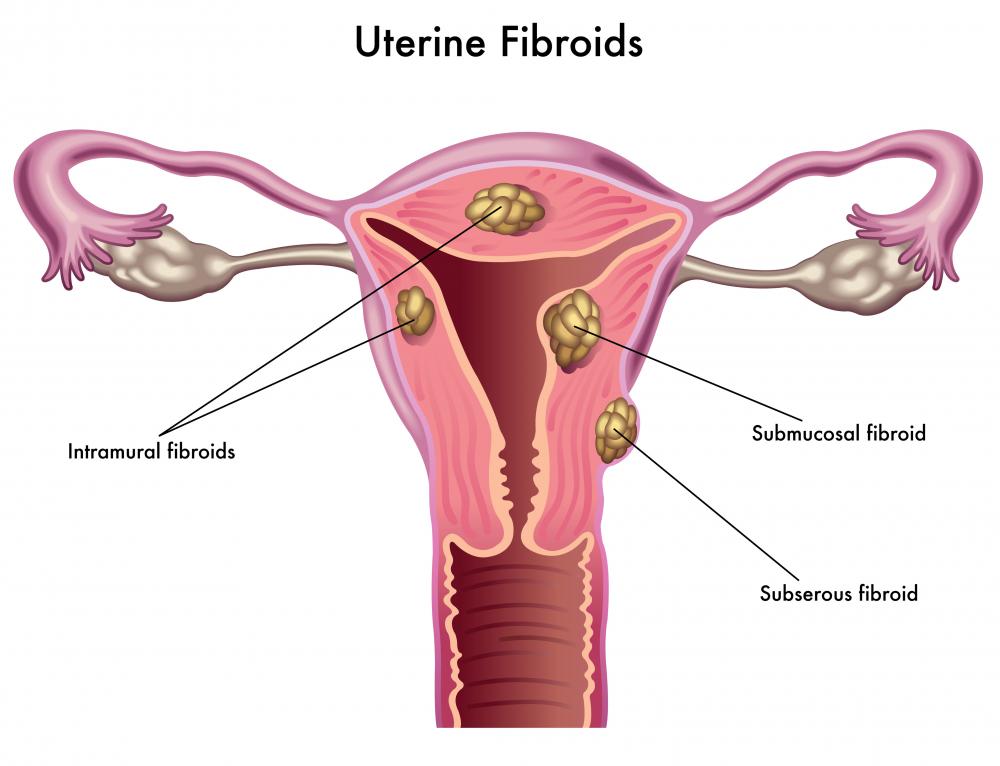At WiseGEEK, we're committed to delivering accurate, trustworthy information. Our expert-authored content is rigorously fact-checked and sourced from credible authorities. Discover how we uphold the highest standards in providing you with reliable knowledge.
What can I Expect During Uterine Fibroid Ablation?
Uterine fibroids are the single most prevalent form of benign tumors in women between puberty and menopause. Even so, only 10 to 20 percent of affected women require treatment for them; most have no symptoms whatsoever. Endometrial ablation is a treatment option available to women with small fibroids who experience heavy bleeding throughout the month. What to expect during a uterine fibroid ablation varies greatly from woman to woman based on the severity of the fibroids and the method of ablation used.
All forms of endometrial ablation work toward the same goal: the removal of the lining of your uterus. This operation does not require a surgical incision. A doctor can use hot fluids, microwaves, high frequency ultrasonic waves, electricity, a balloon or intense cold for tissue removal. In addition to the surgical removal of the lining of your uterus, a doctor will surgically remove the fibroids.

Electrosurgical uterine fibroid ablation is performed under general anesthesia. A surgical tool is inserted via the cervix. The tool becomes hot and the surgeon cuts away the biological tissue. The entire surgery lasts less than 10 minutes on average.
Microwave surgery involves the insertion of a tool that radiates microwaves. The microwaves burn the tissue away while the doctor moves the wand over the interior surface of your uterus to rid your body of unwanted cells. Microwave surgery takes between one to four minutes. Radiofrequency uterine fibroid ablation takes between 80 and 90 seconds. A tool is inserted via the cervix that releases an electrode array inside your uterus, vaporizing the fibroids and other unwanted cells.
Hot saline fluid can be used in uterine fibroid ablation. The fluid is circulated around the uterus. Cryoablation relies on inserting ice balls into the uterus, which destroys the tissue. Both of these methods take between 10 to 20 minutes.

During the surgery, you may feel discomfort in your abdomen if local anesthesia was used. If you are under general anesthesia, you will not feel anything until you wake up. After uterine fibroid ablation, you may experience cramps or discomfort in your lower abdomen. Some women experience a light bloody discharge for up to two weeks and you may find you need to urinate more frequently than usual in the 24 hours following the procedure. Your doctor may advise you to avoid sexual intercourse and tampon use for a length of time after having a uterine fibroid ablation — the length of time varies from person to person.

The risks of uterine fibroid ablation include perforation of the uterine wall, damage to nearby organs and discomfort, pain, bleeding and infection. Speak to your doctor or another qualified health care professional if you are concerned about uterine fibroid ablation surgery. Your doctor can give you the details of the procedure and what to expect in your unique circumstance.
AS FEATURED ON:
AS FEATURED ON:















Discussion Comments
Fibroids are very common and most women never realize they have them. In instances where they do cause problems women report the following common symptoms: periods lasting seven days or more, heavy menstrual bleeding, back aches and leg pain, frequent urination, a feeling of pressure in the pelvis and constipation. The prolonged periods can also cause anemia and people with anemia might feel tired or short of breath.
Post your comments